You lift the lid on your chest freezer and expose a series of packages that are dated from last fall’s successful season. Not sure what to cook for dinner or what to do with those packages that are full of meat trimmings? I might have some ideas for you. You took the time to properly process your wild game from the kill site to the freezer, now it’s time to enjoy the fruits of your labor. Here’s how to prepare your deer meat for the table.
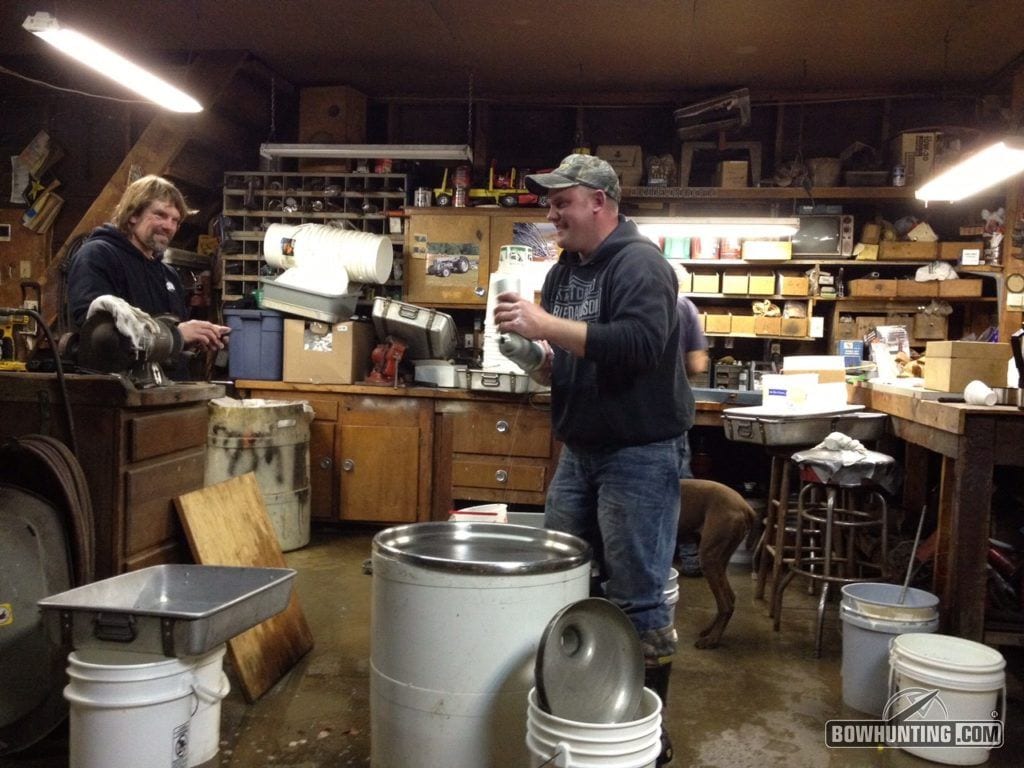
Engaging the entire family and hunting party helps make the processing more enjoyable and not so daunting.
I want to start with the trimmings, or all the meat that is not a roast or steak. In my family, part of our hunting tradition is processing our own venison. Each year, we make summer sausage, ring bologna, bratwurst, hot dogs, hot sticks, and venison burger. Occasionally, we will try jerky and breakfast sausage recipes too. We have a large smoker that we converted out of an old pump house and our own unique processing system. It ends up being a long weekend and a lot of work, but we produce some pretty tasty venison.
First, you have to decide what it is you want to make.
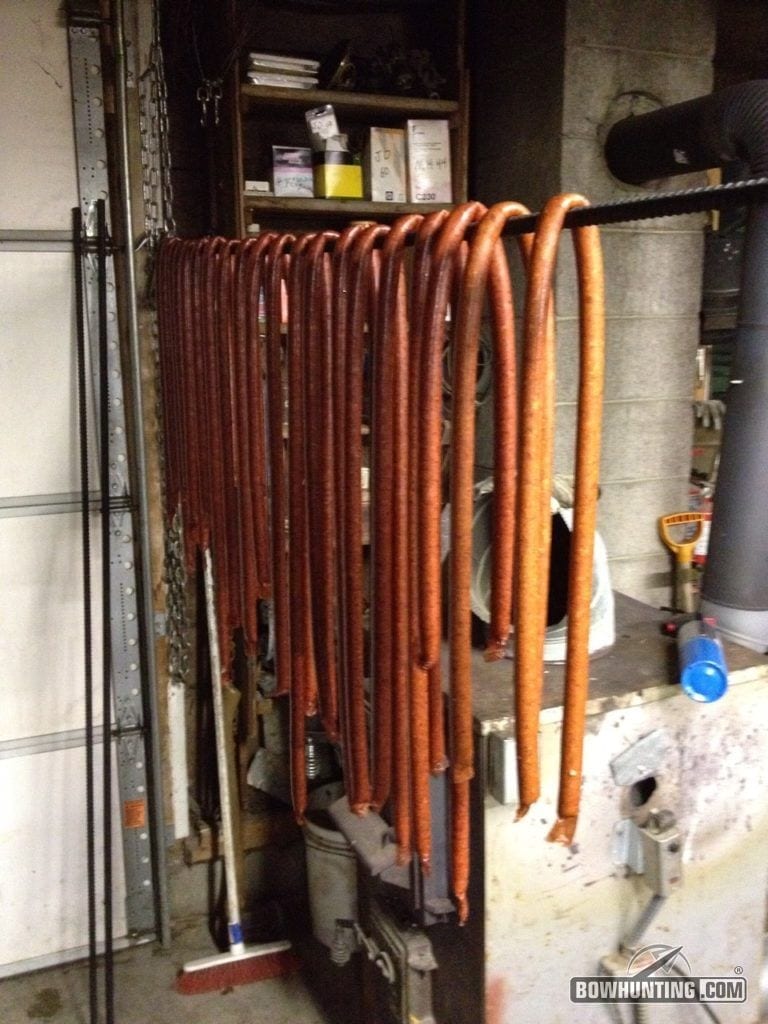
These hot dogs are loaded and ready for the smoker. Using steel rods makes hanging meat in the smoker an easy task.
My recommendation would be to start with ring bologna. The ring bologna seems to be a favorite in our family, and my young children can’t seem to get enough of it. In most cases, your local butcher shop will provide spices and recipes for whatever it is you would like to make. We have been using the same recipe and purchasing our supplies from the same butcher for as long as I can remember. Why mess with a good thing, right?
The first step is to figure out the total weight of meat you plan to process. The weight determines the amount of pork you need to mix with the venison and the amount of spices added to the mixture. This mixture is then stuffed into the corresponding casing for the end product. You can use real or synthetic casings. For ring bologna, we use sheep intestine for the casing. We purchase these with the spices and the pork at the locker plant. You want to make sure you keep the casings soaking in water right up until you are going to use them. This prevents them from tearing and getting too dry when you are stuffing the meat mixture into them. The stuffing process is done using a meat grinder with a stuffing cone on the end. This process works much better with one person feeding the grinder and one person managing the casing at the other end. Once all the casings are stuffed and tied, it’s time to load the smoker.
Smoking times and temperatures can vary depending on what you are smoking. Ring bologna typically only takes about an hour and a half to two hours to smoke and isn’t as fussy as some of the other recipes, which is why I recommend trying this one first. Hang the rings on poles or hooks and place in the smoker. Use a meat thermometer to monitor the internal temperature of the rings. Once the desired temperature is reached, remove the rings and cool them down as quickly as possible. After the rings are cool to the touch, place them in freezer packages and freeze until ready to prepare for the dinner table.
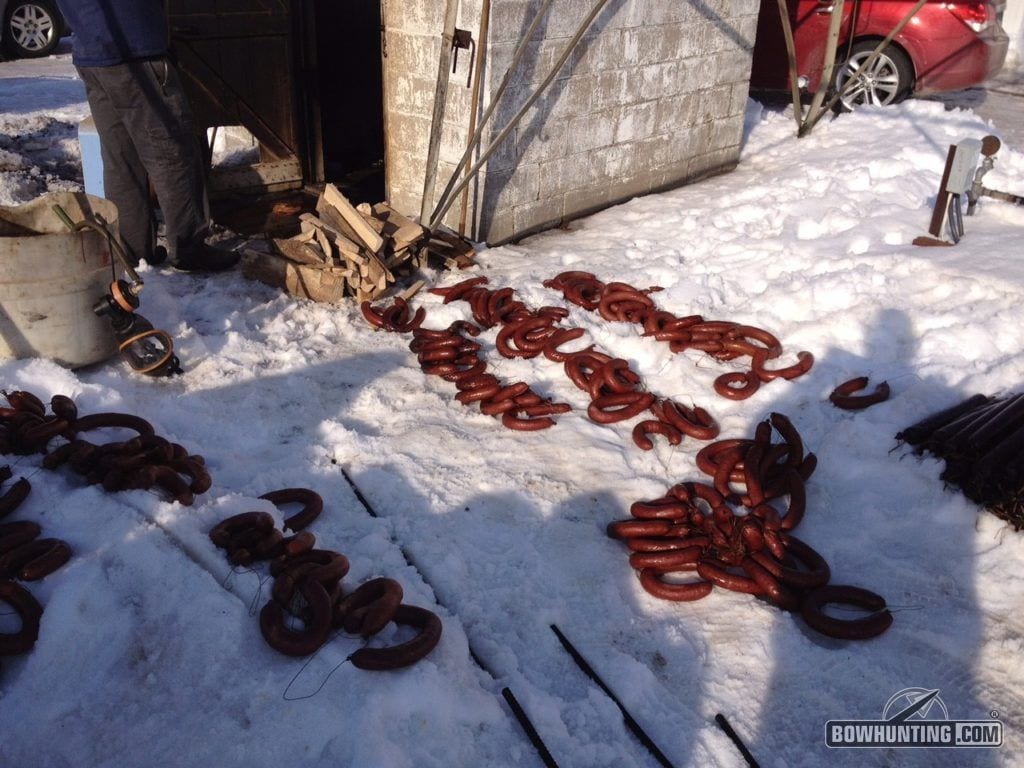
Completing the smoking process with snow on the ground allows quick and easy cooling of the rings.
In my family’s case, we repeat this process for each recipe we make. Our process is at a much larger scale, but you can replicate the process with a small smoker or even in your home oven. The internet is full of forums with people willing to share their recipes and discuss their successes and failures. This can be a real valuable resource when trying new recipes or for smoking tips. The hunting community is a pretty tight knit group and most are more than willing to share their recipes and secrets.
Jerky is always a favorite among enthusiastic home processors. Those slices of meat taken from between the ribs are perfect for jerky because they are already thin pieces. You can always use other trimming pieces too, just slice them as thin as possible to speed up the cooking and dehydrating process. My recommendation is to try small batches first to perfect your process. Once you have perfected your recipe and cooking regime, then you can ramp up production. In my own experience with jerky, I have had various levels of success…definitely more often in the not so successful category, but I’ll continue to try and perfect the process.
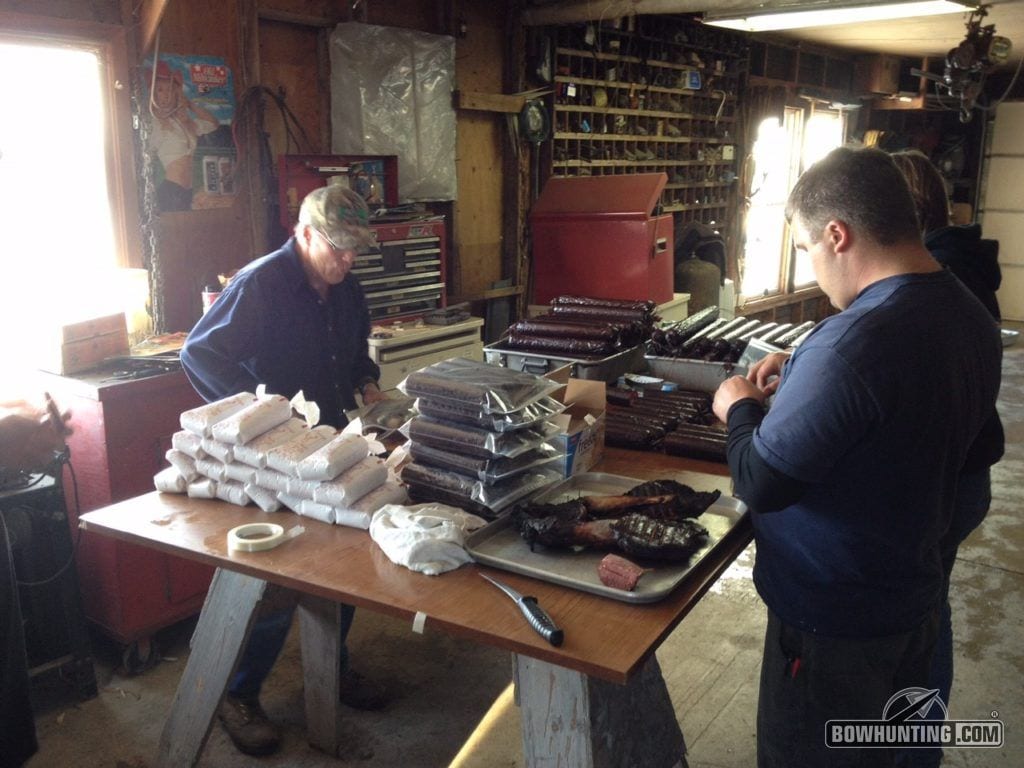
Once all the meat has cooled, it gets sorted and packaged for the freezer.
Roasts can be prepared in the crockpot, sliced into steaks, or smoked. Venison is very lean meat so careful preparation is critical to tasty results. When cooked for long periods of time, venison can become very dry. It’s extremely important when cooking roasts to keep the meat moist. A simple recipe that I’ve had success with is to put the roast in the crockpot with a couple cups of water, a can of beef broth and salt and pepper sprinkled on top. Cook this on low for eight to ten hours. The end result is lean, tender, roast venison. Roasts can also be sliced into steaks at whatever thickness you prefer. Marinating these steaks in your favorite marinade can lead to some very tasty dinners.
Check out this video on how to make venison jerky and lots of other great meats…
Perhaps the most tasty and tender meat from the whitetail deer is the tenderloins. There’s something about grilling fresh tenderloins and swapping hunting stories with your friends and family, that truly strikes our core. You can prepare tenderloins with nothing more than seasoning salt or you can marinade them for even richer flavor. Whichever you prefer, the key is to not cook them too long. If you can get your grill temperature around 600 degrees, you can sear them a minute or two on each side and serve. Paired with your favorite side dishes, the tenderloin steaks can create mouth-watering meals.
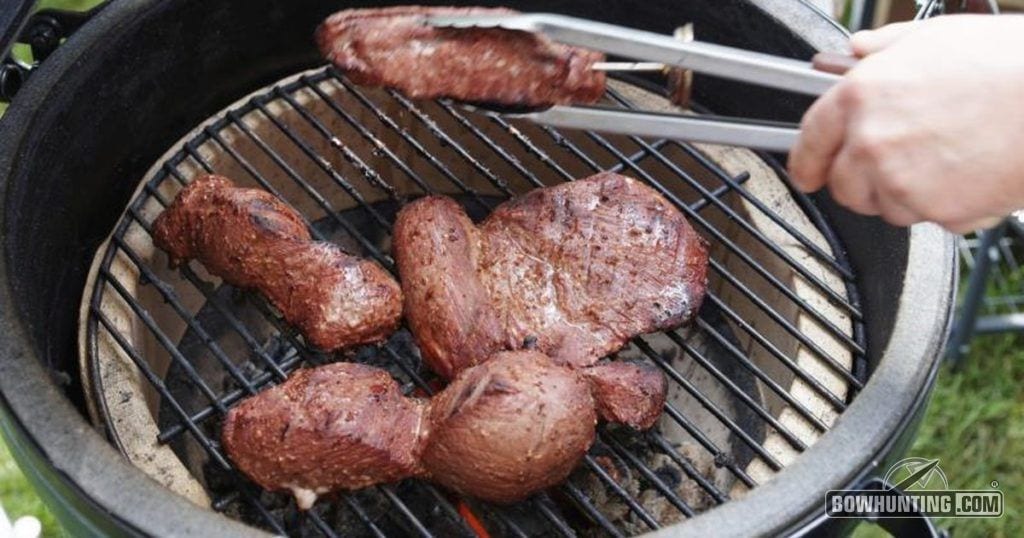
Searing venison tenderloins on the grill creates a tender, juicy and flavorful steak to accompany any meal.
Us hunters tend to spend countless hours scouting land, checking trail cameras, creating food plots, hanging tree stands and shooting our bow. We are constantly upgrading our equipment and changing our strategies. Spring is spent scouting and gearing up for fall. Summer is spent working cameras and traveling backroads during the last two hours of the day to glass velvet bucks nibbling on soybeans. All of this is in effort to put ourselves in the right place, at the right time, to successfully harvest a mature whitetail deer. We take the necessary steps to properly field dress the animal and cool the meat as quickly as possible. Then carefully, we perform like trained butchers to preserve as much meat from our harvest as possible. Finally, we scrutinize over the fine details as we cook and prepare meals for our family. All of this is done to ensure our families are eating healthy and knowing exactly where our meals are coming from. Isn’t that what hunting is all about? It definitely is in my family, and hopefully in yours too.

 By
By 



